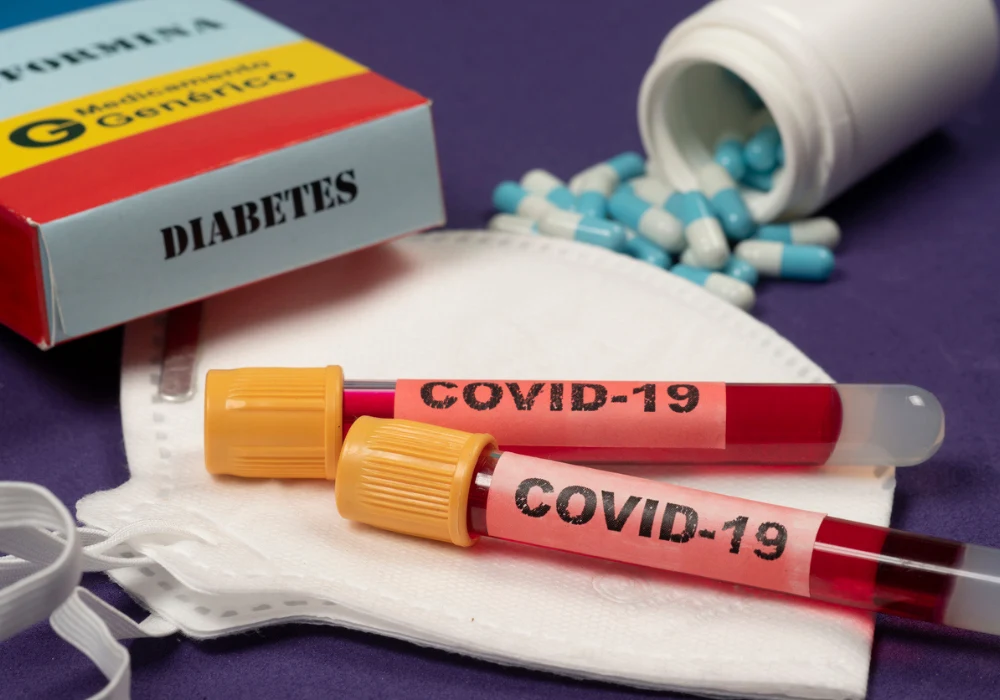The COVID-19 pandemic has highlighted the complex interplay between pre-existing health conditions and disease outcomes. One of the critical areas of concern has been the impact of diabetes on the severity and prognosis of COVID-19. Early in the pandemic, it became evident that individuals with diabetes were at a higher risk of severe illness and mortality from COVID-19. This association has been attributed to factors such as the overexpression of the ACE2 receptor and an amplified inflammatory response, commonly known as a cytokine storm, in diabetic patients. This article delves into a comprehensive three-year study that examines the long-term effects of COVID-19 on lung health in diabetic patients, focusing on persistent respiratory symptoms, lung function, and CT scan findings.
The Role of CT Scans in Monitoring COVID-19 and Diabetes
Computed tomography (CT) has been instrumental in diagnosing and monitoring COVID-19, particularly in assessing lung involvement. In diabetic patients, follow-up CT scans have frequently revealed persistent pulmonary abnormalities such as bronchiectasis, parenchymal bands, and reticular changes. These findings are critical indicators of potential lung fibrosis, a condition that could lead to long-term respiratory issues like chronic cough and dyspnea. The study in question conducted regular CT scans at six-month intervals over three years, providing valuable insights into the evolution of these lung changes. It was found that diabetic patients exhibited a higher incidence of fibrotic-like changes compared to non-diabetic patients, suggesting a heightened risk of long-term lung damage.
Pulmonary Function and Long-Term Respiratory Symptoms
Pulmonary function tests (PFTs) are another crucial component of assessing the long-term impact of COVID-19, particularly in patients with diabetes. This study revealed that diabetic patients were more likely to experience persistent respiratory symptoms and reduced lung function compared to non-diabetic patients. Specifically, parameters such as vital capacity (VCmax), forced vital capacity (FVC), and diffusion capacity of the lung for carbon monoxide (DLCO) were significantly lower in diabetic individuals. The reduction in DLCO, a measure of the lungs' ability to transfer oxygen into the blood, was particularly concerning, indicating impaired pulmonary diffusion function. These findings underscore the necessity for prolonged monitoring and potential interventions to manage and mitigate long-term respiratory issues in this population.
Risk Factors and the Pathophysiology Behind Lung Damage
The study also explored various risk factors contributing to lung damage in diabetic patients recovering from COVID-19. Diabetes status emerged as an independent risk factor for impaired pulmonary diffusion function, alongside factors like a history of allergies, female sex, and the presence of fibrotic-like changes on CT scans. The underlying mechanisms linking diabetes to increased lung damage involve a combination of chronic inflammation and microangiopathy, where high blood sugar levels can damage the small blood vessels in the lungs. This condition may exacerbate the damage caused by the COVID-19 infection, leading to more severe and persistent lung abnormalities. Additionally, the study highlighted that poor glycemic control, indicated by high levels of HbA1c, was correlated with worse lung outcomes, emphasising the importance of managing blood sugar levels in diabetic patients, especially those recovering from COVID-19.
The three-year longitudinal study provides critical insights into the long-term respiratory effects of COVID-19 in diabetic patients. It highlights the higher prevalence of persistent lung abnormalities and impaired pulmonary function in this population, underscoring the need for ongoing monitoring and targeted interventions. The study also identifies key risk factors that could help healthcare providers predict which patients are at greater risk of long-term complications. These findings emphasise the importance of comprehensive post-COVID-19 care, particularly for individuals with underlying conditions like diabetes, to improve their long-term health outcomes. As the medical community continues to understand the full spectrum of COVID-19's long-term effects, studies like this are vital in guiding treatment and management strategies for affected patients.
Source: Academic Radiology
Image Credit: iStock






